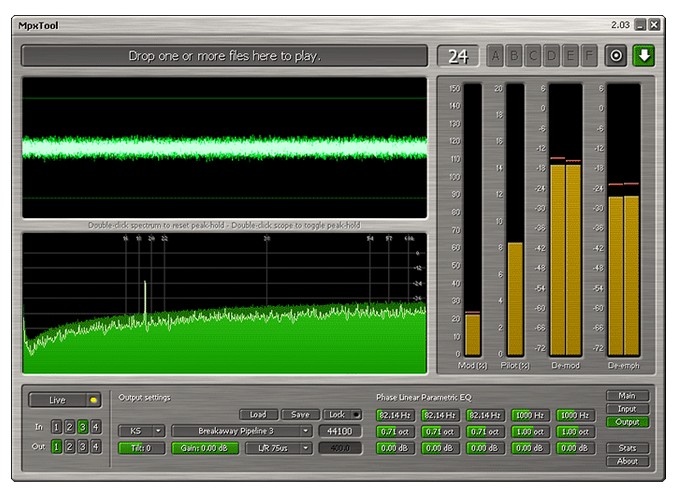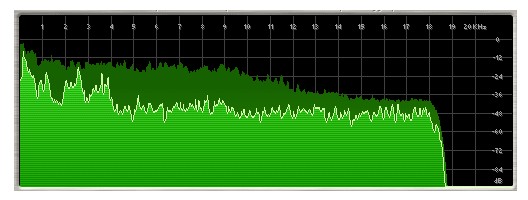Products Category
- FM Transmitter
- 0-50w 50w-1000w 2kw-10kw 10kw+
- TV Transmitter
- 0-50w 50-1kw 2kw-10kw
- FM Antenna
- TV Antenna
- Antenna Accessory
- Cable Connector Power Splitter Dummy Load
- RF Transistor
- Power Supply
- Audio Equipments
- DTV Front End Equipment
- Link System
- STL system Microwave Link system
- FM Radio
- Power Meter
- Other Products
- Special for Coronavirus
Products Tags
Fmuser Sites
- es.fmuser.net
- it.fmuser.net
- fr.fmuser.net
- de.fmuser.net
- af.fmuser.net ->Afrikaans
- sq.fmuser.net ->Albanian
- ar.fmuser.net ->Arabic
- hy.fmuser.net ->Armenian
- az.fmuser.net ->Azerbaijani
- eu.fmuser.net ->Basque
- be.fmuser.net ->Belarusian
- bg.fmuser.net ->Bulgarian
- ca.fmuser.net ->Catalan
- zh-CN.fmuser.net ->Chinese (Simplified)
- zh-TW.fmuser.net ->Chinese (Traditional)
- hr.fmuser.net ->Croatian
- cs.fmuser.net ->Czech
- da.fmuser.net ->Danish
- nl.fmuser.net ->Dutch
- et.fmuser.net ->Estonian
- tl.fmuser.net ->Filipino
- fi.fmuser.net ->Finnish
- fr.fmuser.net ->French
- gl.fmuser.net ->Galician
- ka.fmuser.net ->Georgian
- de.fmuser.net ->German
- el.fmuser.net ->Greek
- ht.fmuser.net ->Haitian Creole
- iw.fmuser.net ->Hebrew
- hi.fmuser.net ->Hindi
- hu.fmuser.net ->Hungarian
- is.fmuser.net ->Icelandic
- id.fmuser.net ->Indonesian
- ga.fmuser.net ->Irish
- it.fmuser.net ->Italian
- ja.fmuser.net ->Japanese
- ko.fmuser.net ->Korean
- lv.fmuser.net ->Latvian
- lt.fmuser.net ->Lithuanian
- mk.fmuser.net ->Macedonian
- ms.fmuser.net ->Malay
- mt.fmuser.net ->Maltese
- no.fmuser.net ->Norwegian
- fa.fmuser.net ->Persian
- pl.fmuser.net ->Polish
- pt.fmuser.net ->Portuguese
- ro.fmuser.net ->Romanian
- ru.fmuser.net ->Russian
- sr.fmuser.net ->Serbian
- sk.fmuser.net ->Slovak
- sl.fmuser.net ->Slovenian
- es.fmuser.net ->Spanish
- sw.fmuser.net ->Swahili
- sv.fmuser.net ->Swedish
- th.fmuser.net ->Thai
- tr.fmuser.net ->Turkish
- uk.fmuser.net ->Ukrainian
- ur.fmuser.net ->Urdu
- vi.fmuser.net ->Vietnamese
- cy.fmuser.net ->Welsh
- yi.fmuser.net ->Yiddish
Pre-emphasis (FM) explained
Date:2014/4/3 10:54:55 Hits:
Pre-emphasis (FM) explained
Pre-emphasis is a strong high frequency boost before the transmitter, and an equally strong high frequency attenuation in every radio.
Why pre-emphasis?
FM radio is inherently a noisy medium. The noise has triangular distribution, meaning the noise is louder at higher frequencies.
Example of noise from weak stereo reception, during a pause (silence):

You see the noise very clearly in both the oscilloscope and spectrum analyzer above, as well as on the meters. This is "Silence" during noisy reception! In the spectrum analyzer you clearly see the 19000 Hz pilot tone, and all the noise around it. Notice also that there is more noise at higher frequencies, and less noise at lower frequencies. In the image above it also looks like the noise rises again at the very lowest frequencies (all the way to the left) but this is not so -- it's simply an artifact of how linear FFT spectrum analyzers work. More frequencies (several octaves, actually) get bunched into just a pixel or two, and the noise energy in each all contribute to the noise.
Anyway. We can all agree that FM is inherently very noisy. To overcome this, FM broadcast uses pre-emphasis. Pre-emphasis is a progressive treble boost, designed to boost the level of high frequencies over the noise floor. In every radio receiver, a corresponding de-emphasis network attenuates the treble by exactly the same amount, yielding flat requency response, albeit with lower headroom for high frequencies.
In the image above, MpxTool was set to 75us de-emphasis. Notice the significantly lower noise level on the De-emph meters compared to De-mod meters.
North America uses 75us pre-emphasis. Europe and Australia uses 50us pre-emphasis. 50us is lighter boost, yielding slightly worse noise reduction than 75us, but more high frequency headroom.

75us pre-emphasis

50us pre-emphasis
Stereo reception is more noisy than mono reception because of the Stereo Subcarrier, located between 22 and 54 kHz. Due to the triangular noise distribution, background noise is very high under this subcarrier, and decoding the stereo subcarrier into Left and Right means that this noise gets shifted down into the audible range. This makes pre-emphasis even more important for FM Stereo reception -- despite the fact that pre-emphasis "goes the wrong way" for half of the subcarrier. At these high frequencies, the direction doesn't matter as much -- they're all noisy.
Effect of pre-emphasis on the noise floor:

75us pre-emphasis stereo

75us pre-emphasis mono

no pre-emphasis
Effect of pre-emphasis on the noise floor, with audio (male voice):

75us pre-emphasis

no pre-emphasis
Notice how pre-emphasis lifts the high frequencies well above the noise floor. Without pre-emphasis, the high frequencies get buried in noise.
In these audio examples you can hear how pre-emphasis affects the audio. Audio clip courtesy of WHIO.

You'll probably agree that it's a good thing we have pre-emphasis!
Next question:
Why is pre-emphasis such a pain in the neck?
Nevertheless, it's difficult to control a pre-emphasized signal. The treble boost causes lots of little spikes in the waveforms, and during S-sounds, crash cymbals, saxophones and other treble-heavy sounds, it causes extremely tall spikes -- up to 17dB! 17dB may not sound like a lot, but it is. 6dB is doubling the level. 6dB more is doubling it again.. That's 400%, and we're still only at 12dB! Add 5dB more just for good measure, and we're at over 700%.
FM channels are fixed bandwidth. Maximum deviation (+/- 75 kHz) is dictated by laws and physical limitations alike. If we go beyond +/- 75 kHz, we're in our neighbours channel already. So, the signal must stay within the bounds. Allowing for these occasional 700% spikes would mean our average modulation must be only 14% (or 10 kHz). This would be a mighty quiet, weak and noisy signal.
To allow high average modulation without overmodulation, the spikes must go, and this is what the back-end clipper in an FM processor does.
Clippers inherently create distortion, so the hard part in making an FM processor is to do the job with as few audible side effects as possible.
This was always the goal of Breakaway Broadcast Processor -- Pack the audio into the carrier as cleanly as possible, with as little distortion as possible, while being as loud as less scrupulous competitors.
Leave a message
Message List
Comments Loading...

